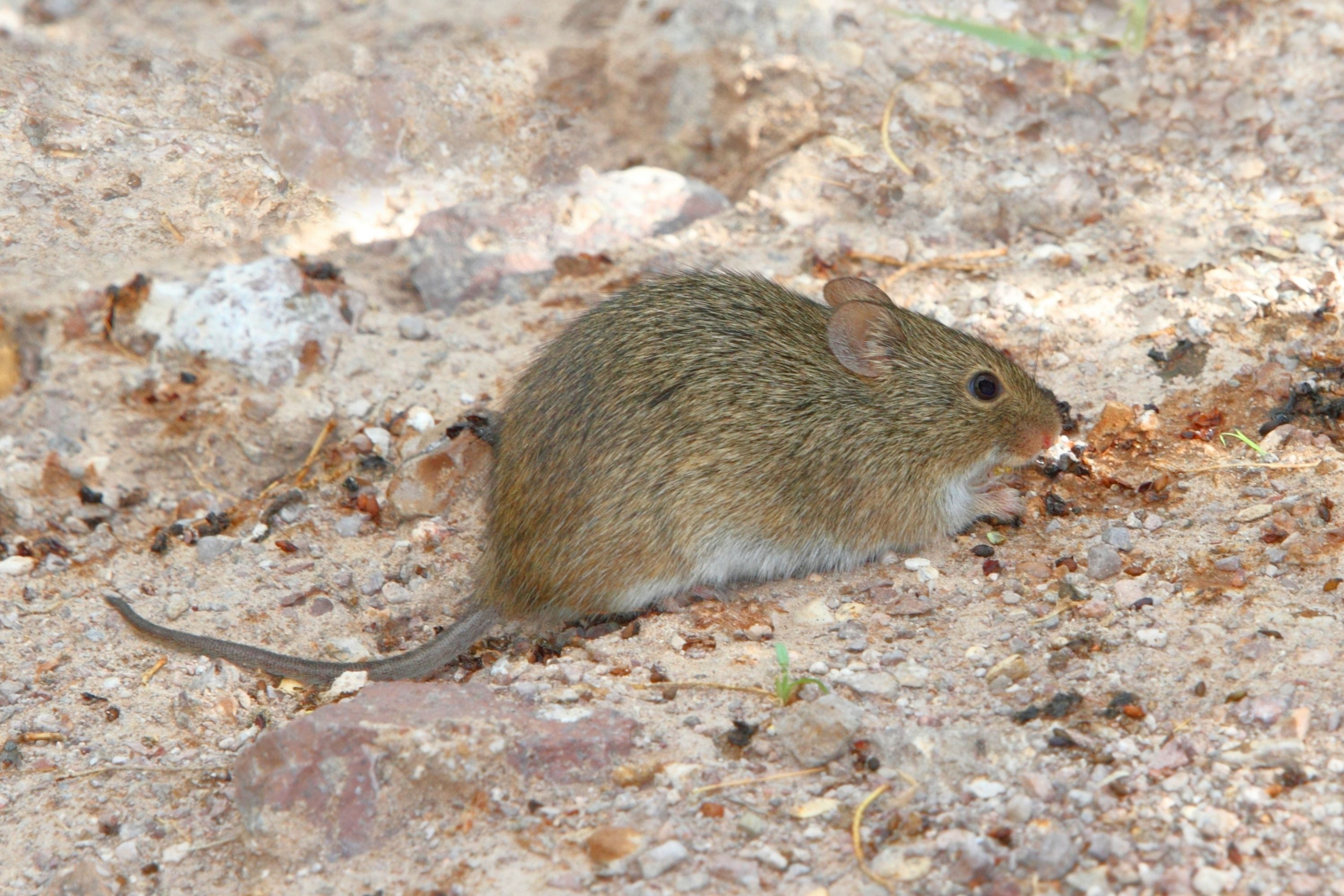Desert woodrat
(Neotoma lepida)

Description
The desert woodrat (Neotoma lepida) is a species of pack rat native to desert regions of western North America. Desert woodrats are relatively small for pack rats, measuring 28 to 39 cm (11 to 15 in) in length, including a 12 to 20 cm (4.7 to 7.9 in) tail. They weigh from 122 to 350 g (4.3 to 12.3 oz), with males being larger than females. Their coloring varies between individuals, and can be anything from pale gray to cinnamon to near-black. Regardless of the color on the rest of the body, however, the animal's underparts and feet are always white, while the otherwise pale fur on the throat region is gray at its base. The tail is distinctly bicolored, and has more hair, and fewer visible scales, than the tails of brown rats. Desert woodrats have a narrow snout, long whiskers, and relatively long ears that are almost the length of the hind feet. Desert woodrats range from southeastern Oregon and southwestern Idaho, south through Nevada and western Utah to California in the US, and Baja California and extreme northwestern Sonora in Mexico.They are generally found in sagebrush scrub areas, in chaparral, and in deserts and rocky slopes with scattered cactus, yucca, pine/juniper, and other low vegetation, at elevations up to 2,900 m (9,500 ft). They are most abundant in rocky areas with numerous crevices or rock piles in which they can seek shelter from predators. Twenty three subspecies are recognised, many of them restricted to small islands in the Gulf of California. They feed on beans and leaves of mesquite, on juniper, and on parts of available cacti, apparently without getting injured by the spines. They also eat creosote bushes, thistles, Ephedra, Mustard plants, sagebrush, and buckwheat. They will also eat other green vegetation, seeds, fruits, acorns, and pine nuts. In desert habitats, they are highly dependent upon prickly pear cacti for water balance, although they can be sustained on creosote year-round. Although they are capable of eating food containing high levels of resins and oxalic acid, such as the leaves of creosote bushes,these affect their water balance and limit their ability to eat other foods, limiting the growth of the woodrats' population in areas where such plants are common.
Taxonomic tree:







